2012
Based on coordinated examinations of broker-dealers throughout the United States, the North American Securities Administrators Association (NASAA) has identified the top compliance violations and offered a series of recommended best practices for broker-dealers to improve their compliance procedures.
A total of 236 examinations conducted between Jan. 1 and June 30, 2012, found 453 types of violations in five compliance areas. The greatest frequency of violations (29%) involved books and records, followed by supervision (27%), sales practices (24%), registration & licensing (14%), and operations (6%).
The top five types of violations found involved: failure to follow written supervisory policies and procedures; suitability; correspondence/e-mail; maintenance of customer account information; and internal audits. Forty-four percent of the examinations involved one-person branch offices; 23% were home offices; 20% were branch offices with two to five agents; 11% were branch offices with more than five agents; and 2% were non-branch offices.
Complete results of the coordinated examinations are available here. Based on the examination results, NASAA recommended 10 best practices to help broker-dealers develop compliance practices and procedures in the following areas:
Suitability. Broker-Dealers must develop effective standards and criteria for determining suitability. State regulations and FINRA Rules 2090 and 2111 require registered persons to "know your customer"and receive training sufficient to demonstrate knowledge of products pre-sale.
Develop, Update, and Enforce Written Supervisory Procedures. BDs also should ensure that staffing and expertise are commensurate with the size of the BD, type(s) of business engaged in by the firm, and the individual responsible for specific procedures.
Exception Reports. Introducing dealers should obtain the necessary exception reports from the clearing dealer to ensure proper compliance. Upon the generation of exception reports, all BDs must document and resolve "red flags"in a timely manner. BDs that rely solely upon conversations with salespersons to address exception reports without contacting investors may subject themselves and supervisory staff to regulatory and/or legal action.
Branch Office Audits. Develop a branch audit program that includes a meaningful audit document/plan, unannounced visits, a means to convey audit results, and a follow-up plan requiring that the branch take corrective action.
Selling Away. BDs must ensure that adequate procedures are in place to address private securities transactions (selling away). If this activity is permitted, the firm's written supervisory procedures should be adequate to monitor this activity on an ongoing basis. The BD's procedures must have a mechanism to conduct a meaningful review of the request and in the instance where the request is denied, a process to determine the salesperson is/has not engaged in the activity.
Outside Business Activity. Written outside business activity requests from salespersons must be received, reviewed and approved by the firm prior to the activity. The BD and salesperson are required to report the outside business activity on the salesperson's Form U-4. The firm should have a supervisory procedure in place to address its approval/denial process and a requirement that the salesperson promptly report any changes to the approved outside activity.
Advertisements. Advertisements and sales literature MUST be fair and balanced and MUST be approved by the BD and/or FINRA. Seminar notices/advertisements, programs, seminar materials utilized, and guest speakers must be approved by the BD. In instances where the salespersons routinely conduct seminars, a supervisory representative of the firm should randomly attend the seminar for compliance purposes.
Correspondence. Correspondence, both electronic and hard copy, must be effectively monitored by the BD. This includes a system of capturing and maintaining electronic, business-related correspondence sent by salespersons from websites and social network service providers outside the firm. For additional guidance, refer to FINRA Notice 11-39.
Customer Complaints. Upon receipt of a complaint, firms must acknowledge the receipt, conduct and document a thorough review of the customer's allegations, and, if necessary, update the salesperson's Form U-4. In situations where the firm discovers wrongdoing, the firm should redress customer harm. Timely reporting and remediating customer harm are some of the factors under NASAA guidelines to determine if the firm is entitled to credit for cooperation.
Working with Seniors. Baby Boomers are moving into retirement, and as individuals age, cognitive abilities begin to wane. BDs and financial professionals should develop procedures/best practices for handling accounts of "senior"investors. A number of recommendations relating to these best practices are contained in joint reports issued in 2008 and 2010 by NASAA, SEC, and FINRA.
